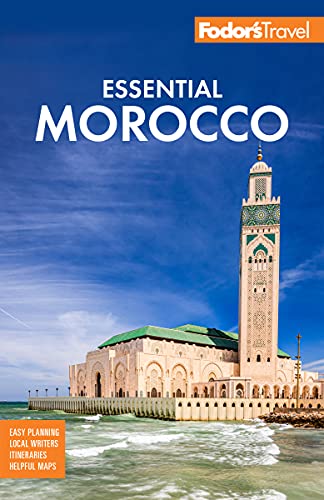Renting a Riad
Only once you venture forth into the ancient higgledy-piggledy medinas of Fez, Meknès, Marrakesh, or Essaouira do you find a truly authentic Moroccan riad, and even then you could still walk past it, blissfully unaware.
What is a riad?
These beautiful, cloistered dwellings are usually tucked away discreetly behind heavy wooden doors set into high, featureless walls on blind alleys, called derbs. Traditional riad-style houses were (and still are) the domain of wealthier families and pass down from one generation to the next. They contain many of the same decorative and structural elements as their more palatial counterparts, including hand-cut, colorful tiles (zellij), silky tadelakt walls of finely pressed and waxed plaster, painted cedarwood ceilings, arched colonnades, living rooms on the ground floor, and sleeping quarters on the upper floors. At the center of a riad is an ornamental garden with a central fountain or water feature and rooms that peer inward through windows of wrought iron or wooden latticework.
In more recent times, with changing fashions and the development of modern nouvelle villes by colonial rulers, many Moroccans relinquished their old houses for more comfortable dwellings with 20th-century sanitation and modern household amenities. However, the faded charm and beauty of these traditional structures have captured the imagination of foreign investors, who often snap them up as holiday retreats; many have been restored lovingly to their former glory with sumptuous attention to detail and the addition of state-of-the art facilities. Now, hundreds of riads offer boutique accommodations in Morocco's older cities, usually with about three to six bedrooms over two levels.
Why rent a riad?
Renting a riad in one of Morocco’s medieval towns is a superb alternative to the often-charmless option of larger hotels in the modern districts. Most riads are rented on a per-room, per-night basis, and public areas are shared with other tourists. However, nearly all riads offer their entire accommodation at a reduced rate for exclusive rental if booked far enough in advance (perhaps six months to one year ahead). For large families and groups of friends, taking on an entire riad gives an authentic and colorful taste of traditional Moroccan life. Noise easily carries in a riad, due to its enclosed nature, so renting the entire premises gives more freedom to party well after bedtime.
What is included?
Riads that operate year-round as guesthouses have an on-site manager who attends to daily housekeeping and security and performs concierge services. Of course, some people want complete privacy, so ask if the manager is on duty during your stay. Quoted prices usually include daily cleaning, breakfast, bed linen and towels, Wi-Fi, satellite TV, a DVD player, hair dryers, and access to the kitchen for cooking your own meals. Ask at the time of booking if there's an extra charge for electricity or firewood. Additional meals, private transport, guides, special activities, and excursions can normally be arranged for an additional cost.
How much does it cost?
Riads come in all sizes and levels of luxury, so prices range anywhere from 300 DH to 3,000 DH per room per night. A midrange, well-equipped, and stylishly furnished riad costs approximately 700 to 1,000 DH per night per room; for a typical riad with four bedrooms, expect to pay around 2,500 DH to 3,500 DH per night, including a discount for stays of more than one night. For deluxe riads or villas in the outlying Palmery area of Marrakesh, the sky is the limit for nightly rental prices.
What about location?
Riads are usually tucked away into side streets just wide enough for a donkey cart and buzzing mopeds. Check how far the riad is from the main tourist areas and souks. Check if the neighborhood is safe, well-lighted, and has a taxi stand or parking lot within easy walking distance. Moroccan medinas can be hazardous after dark because sidewalks are poorly maintained, and tourists can get hassled by beggars.
How many rooms/beds do you need?
Riad bedrooms are often narrow, so double beds are most common. Ask in advance if you need twin-bed rooms, extra single beds, or cribs.
Do you need a pool?
Most riads have some kind of water feature within the patio or perhaps on the roof terrace; however, a "pool" is usually little more than a plunge pool. If you want to swim, you might prefer a hotel. Or you could really splurge by renting a private pavilion within the grounds of a villa in the Palmery area of Marrakesh.
What time of year are you visiting?
Moroccan winters can be bitterly cold and wet, so check that rooms are heated and that cost of heating is included. If there are open fires, ask who supplies the firewood and sets the fire for you. By contrast, the summers can be ferociously hot, so check that there is air-conditioning and that it is included in the rental price.
How old are the members of your party?
Most riads have three levels, with access to most of the upper bedrooms via narrow and winding tiled staircases. If you have small children or members of your party with restricted mobility, a riad may not be the best choice. Also, be sure to check with the owner to ensure the riad allows children.
How do you find a riad to rent?
A simple Internet search turns up dozens of riads, and if booking far ahead, you should be able to rent a full riad. If you do not speak French, search for a riad with English-speaking management—one simple indicator is if the website is written in good English. Good sources for privately owned riads that can be rented directly from the owner include www.ownersdirect.co.uk and www.vacationrentalpeople.com. There are also agencies such as www.riadsmorocco.com, which represent various properties. Finally, for the high end of the market, companies such as www.boutiquesouk.com and www.fesmedina.com organize stays at premier properties with full concierge service.




